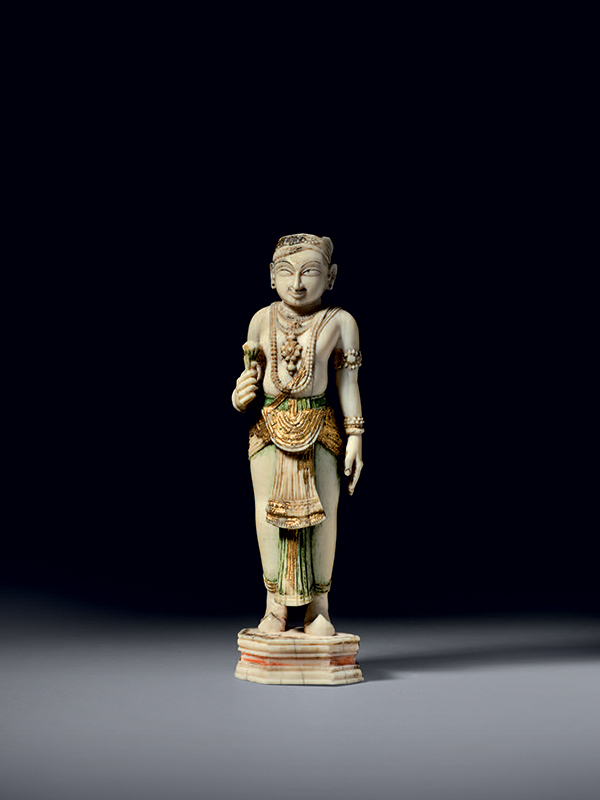Ivory standing figure
A finely carved ivory figure, standing on a tiered octagonal base. He has a straight posture with his left arm extended straight down his body, his right arm is bent forward and holds a flower. His legs are straight with his feet slightly apart, the left foot is positioned a little forward. His face is finely detailed with closed mouth and a slightly smiling expression. He has long arched eyebrows that frame the almond shaped eyes. His pendulous ears are pierced and possibly originally held earrings. His head is adorned with a turban. He wears several necklaces and armbands both around his wrists and upper-arms. An elaborate dhoti (loincloth) is folded around his waist and between the legs. The ivory is of pure white tone and shows remnants of gilding and polychrome.
This exquisite figure is carved from a single piece of ivory and is of an even white tone. Ivory has been in demand since ancient times. The smooth, satin white material was used extensively for jewellery and furnishings, such as caskets, boxes, beds, chairs, thrones and palanquins. Frequently doors, pillars and even entire pavilions in ancient palaces were made of ivory. According to the Ramayana walls and pillars were inlaid with ivory. A comparable ivory figure from Madurai is in the British Museum, London.[1]
- Tardy, Les Ivoires, Paris, 1977, p. 166, no. 1

